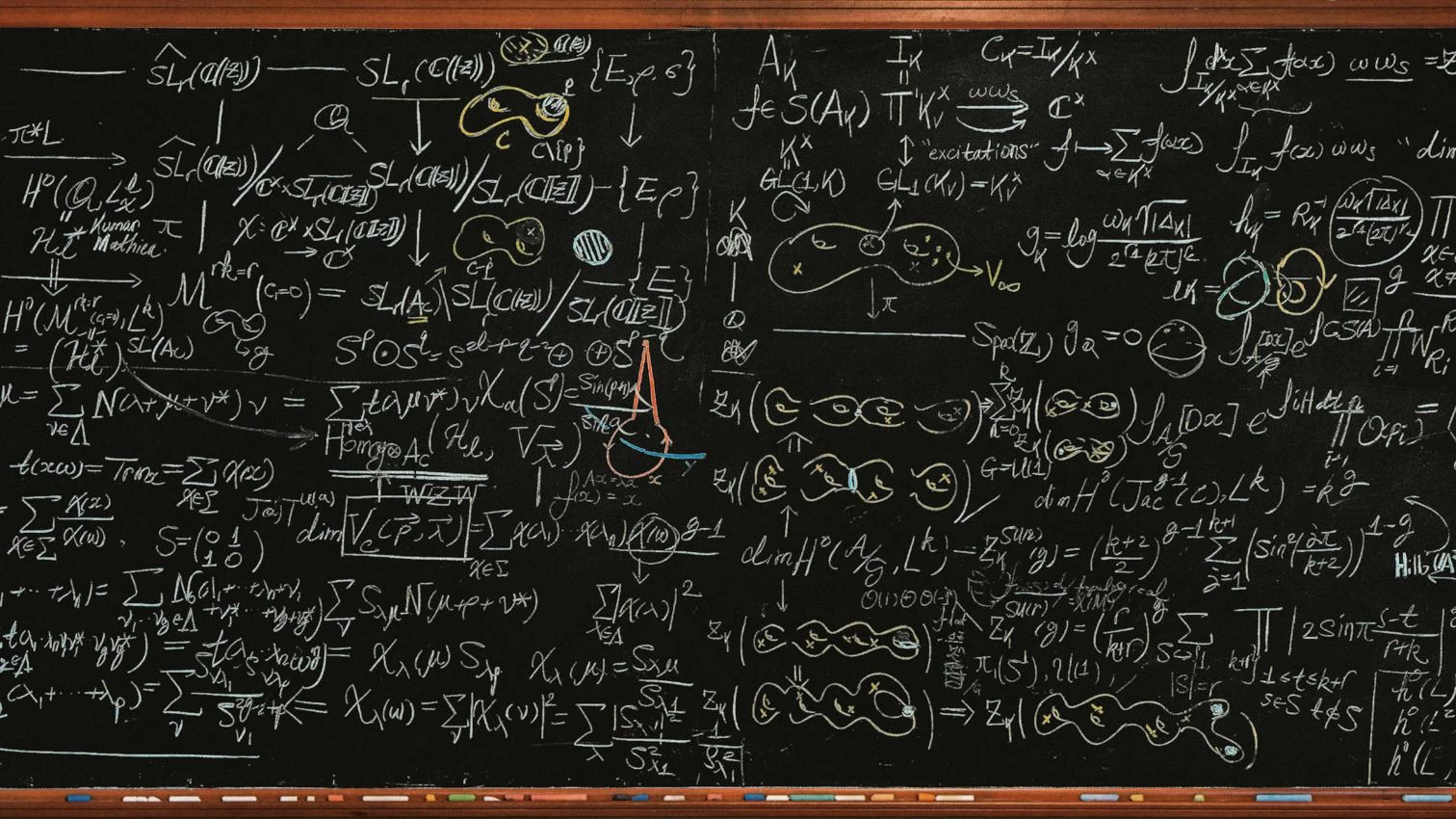
The science teacher at the board holding a piece of chalk is a scene much seen in movies. Students take down notes as he or she fills the slate with white math symbols. In the fun variant it’s a crackpot scientist; in documentaries or biopics of the history of science, maybe an Einstein or Heisenberg.
Those huge surfaces full of signs (written or drawn?, sometimes partly rubbed out, often incomprehensible), are the subject of Do Not Erase. Jessica Wynne’s attraction to this version of hieroglyphic script – literally hieros glyphos, ‘sacred carvings’ – and her fascination with the mystery of Higher Mathematics are captured in a series of photographs. A hundred blackboards or greenboards recently scribbled over with chalk, just before being smudged and effaced altogether. Snapshots immortalizing the mathematical problem of the moment, and sometimes its resolution.
Chalkboards and Reflections is the title of the photo series. The photos come with essays by the respective mathematicians, who convey to us their loyalty to the tradition of chalk, their joy when an equation is solved, their love of the tactile experience. Wynne goes further, intuiting a poetic or a secret art, perhaps from a club of searchers of truth. But what happens when the board is cleared, when the brilliance of the equation and the lucidness of the scheme disappears? Even more metaphysical is the afterword by Alec Wilkinson, which probes the background of the matter and recalls the long history of our Western discovery of mathematical and geometrical ideas. Those eternal solutions of Aristotle and Pythagoras which not even a god could change, and which seem to belong to the same mind of God according to Cantor. Mathematics in pursuit of Truth.
It could be that chalkboards are stunning not so much because of the content of the mathematical discourses, but because of the underlying mythology (in the current sense of the term). The modern mathematical myth shines forth, a myth whose greatest formula is perhaps E=mc2. A myth propagated by its hermetic and therefore mysterious nature, and, like the Big Bang and string theory epiphanies, mythologies of the absolute, written with equations.
But what makes them beautiful, besides stunning, is our very notion of contemporary art, although the photographer Wynne skirts the issue. We have accepted simulations of writing, including Jeanne Tripier’s deliriums, as marginal art, and we have mythified giant vertical stains, wall writing, informal expressionism, and graffiti. The idea of blackboards as art leads us to the work of Cy Twombley, the wonderkid from Black Mountain College who was so praised by New York philistines, as Hannah Arendt called them; to his huge canvases smeared with enormous messy doodles. Or the horror vacui of graffiti. But that kind of art ought to be frozen for consumption, it uses borrowed thoughts, and, as Roland Barthes would say, it tries to be a metalanguage. Chalkboards, in contrast, are not market art, but representations of intelligence.






